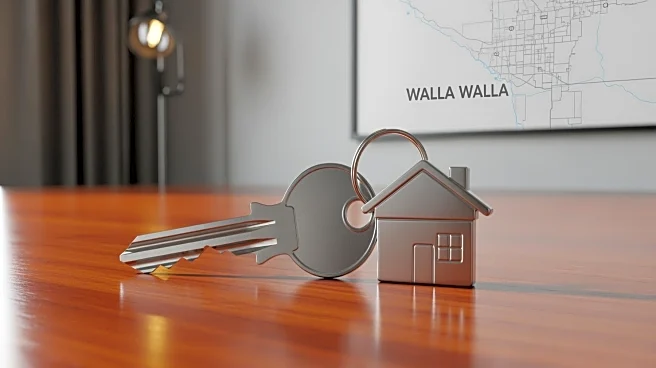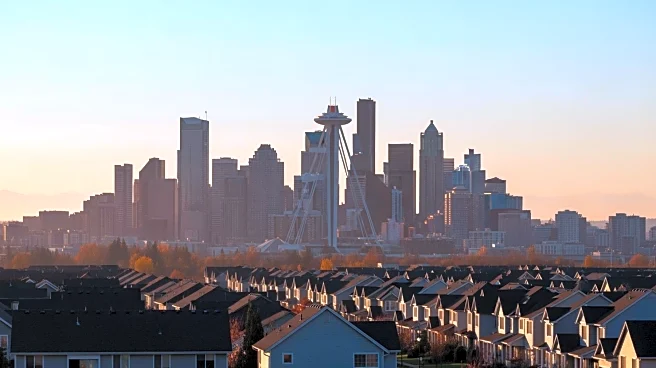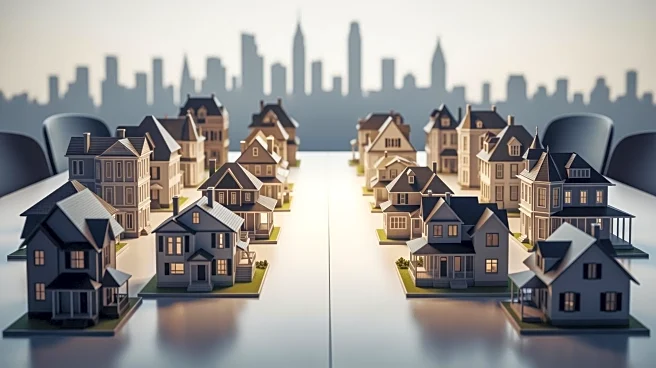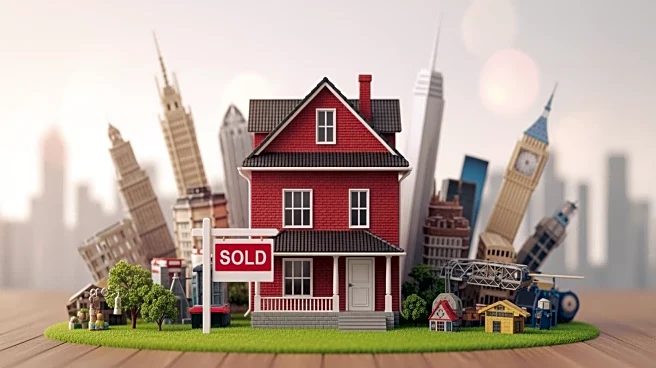What's Happening?
The concept of a 'Zoom room' has become increasingly popular in the real estate market, as homeowners seek dedicated spaces for videoconferencing and remote work. A Zoom room is a designated area within
a home where individuals can comfortably attend virtual meetings, whether for work, remote schooling, or social interactions. According to Realtor.com's Home Trends report, listings mentioning Zoom rooms have increased by 56.5%, with homes featuring these spaces selling at a median price of $514,990. Real estate agent Cedric Stewart notes the demand for Zoom rooms, along with other home office spaces, has surged due to the shift to remote work.
Why It's Important?
The rise of Zoom rooms reflects the ongoing impact of remote work on housing preferences and real estate trends. As more individuals work from home, the demand for functional and comfortable spaces for videoconferencing has grown. This trend influences home design and renovation decisions, as homeowners prioritize features that enhance productivity and connectivity. The popularity of Zoom rooms also highlights the evolving expectations of homebuyers, who increasingly value spaces that accommodate modern work and lifestyle needs. Real estate professionals may need to adapt their strategies to cater to these changing preferences.
What's Next?
As remote work continues to be a significant aspect of professional life, the demand for Zoom rooms and similar spaces is likely to persist. Homeowners and real estate developers may explore innovative designs and technologies to enhance these areas, focusing on factors such as lighting, acoustics, and connectivity. The trend may also influence broader architectural and interior design practices, as homes are increasingly tailored to support remote work and virtual interactions. Real estate agents and industry stakeholders will need to stay attuned to these developments to effectively market properties and meet buyer expectations.
Beyond the Headlines
The emphasis on Zoom rooms underscores the cultural shift towards remote work and its implications for work-life balance. As individuals spend more time working from home, the boundaries between professional and personal spaces may blur, prompting discussions on the importance of creating environments that support mental health and productivity. The trend also raises questions about the long-term impact of remote work on urban planning and housing markets, as demand for homes with dedicated workspaces may influence development patterns and community infrastructure.











